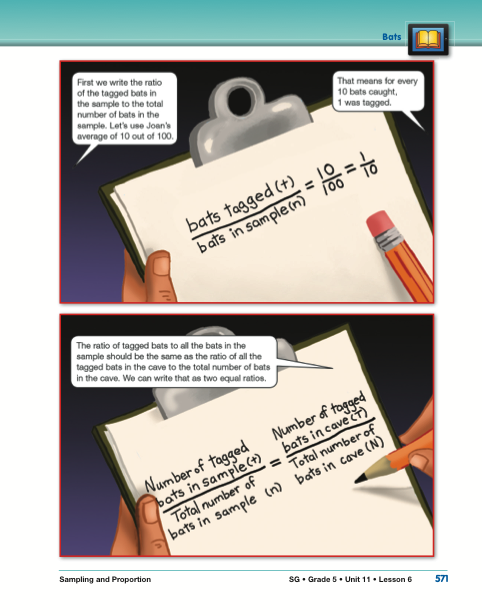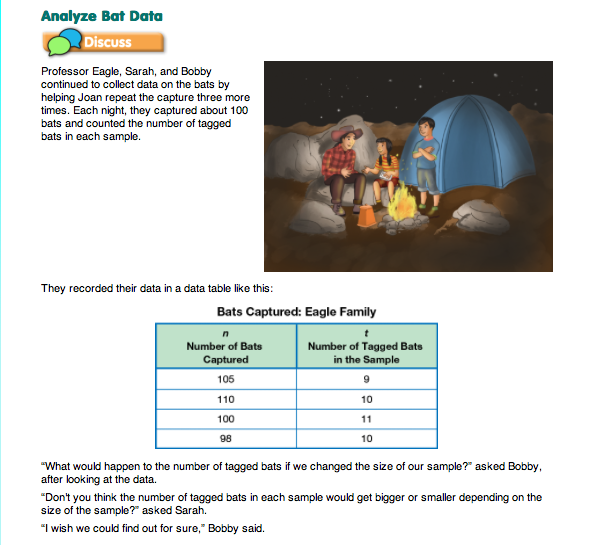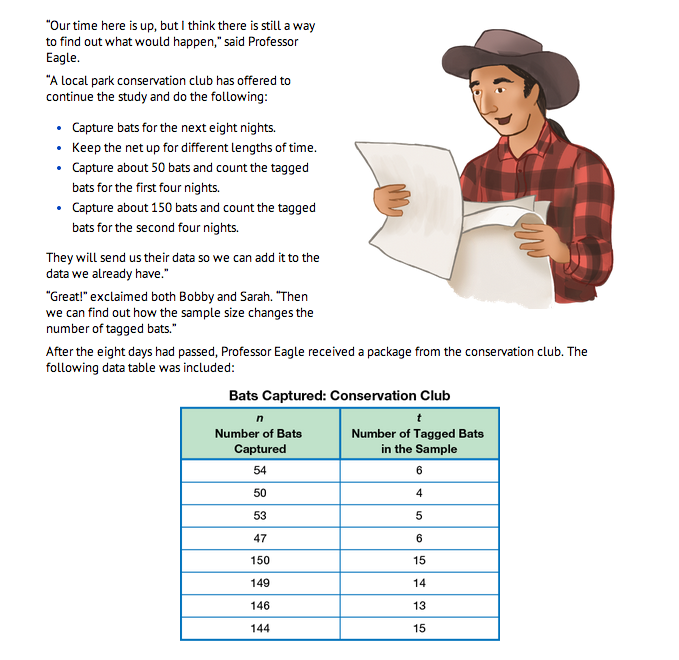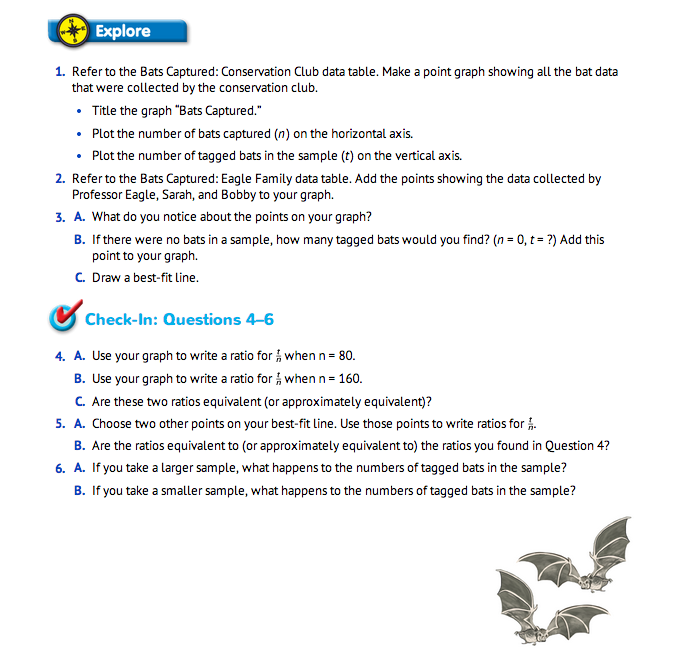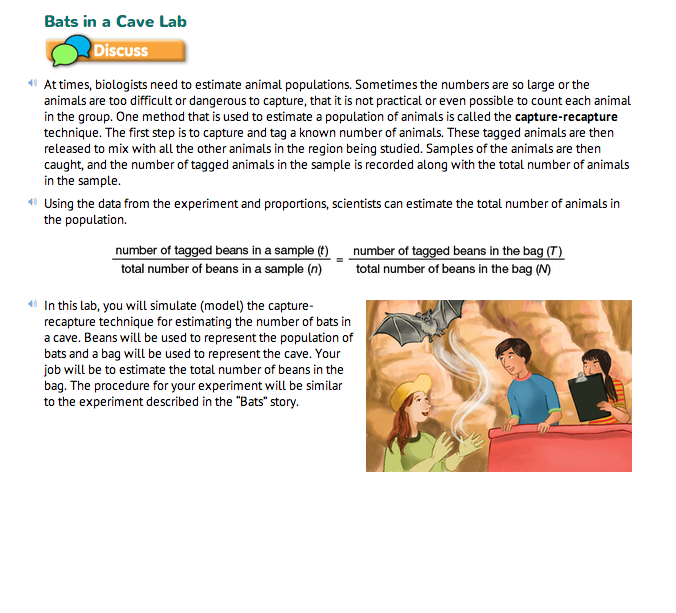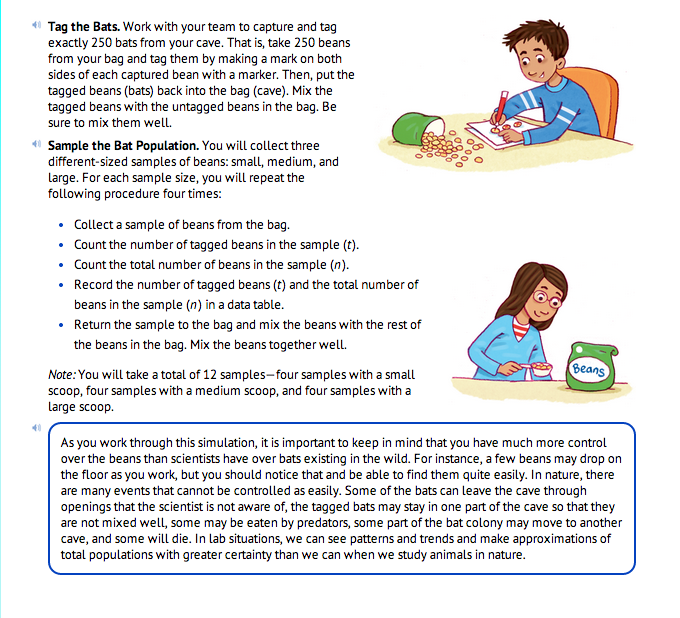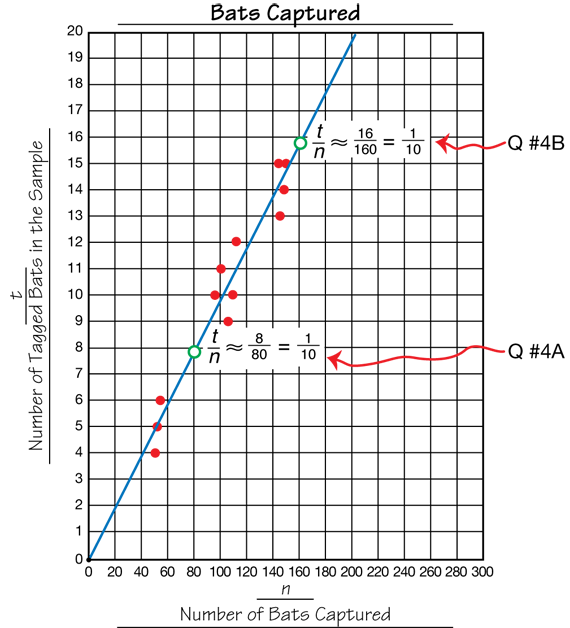Sampling and Proportions
Est. Class Sessions: 4Developing the Lesson
Part 1: Sample the Bat Population
Read and Discuss the Story. Direct students to the Sampling and Proportion pages in the Student Guide. Read the story “Bats.” In the story, Professor John Eagle, Bobby, and Sarah learn about the use of sampling to estimate populations of animals. They use the ratio of tagged bats (t) to the total number of bats (n) in a sample to estimate the number of bats that live in a cave. After reading, discuss the use of sampling by the scientist, Joan, in the story.
Ask:
Pages 571–572
Ask students to turn to the first page showing the ratios.
Ask:
Analyze Bat Data. Read together the vignette that follows the story in the Analyze Bat Data section of the Student Guide. Professor Eagle, Bobby, and Sarah collect data on the number of tagged bats in each capture and record their data in a data table. Distribute Centimeter Grid Paper to each student so that they can graph the Eagle Family's data. Have students work in pairs to complete Questions 1–3.
For Question 1, students make a graph of all the data collected by the conservation club. They plot the number of bats captured (n) on the horizontal axis and the number of tagged bats in the sample (t) on the vertical axis. They then add the data collected by Professor Eagle, Sarah, and Bobby to their graphs in Question 2. Students will see that the points form three distinct clusters or groupings on their graph (Question 3A).
They add the point (n = 0, t = 0) to their graph since there will be no tagged bats when there are no bats in a sample (Question 3B). A best-fit line is then drawn through the points (Question 3C). Remind students that when drawing their best-fit lines, they should try to draw the lines so there are about as many points above the line as below the line. A sample graph is shown in Figure 1.
Assign Check-In: Questions 4–6 for students to complete independently. In Questions 4–6 students use their graph to find ratios, determine if they are equivalent, and use proportional reasoning to solve problems.
For Question 4, asks students to write two ratios using the best-fit line. Figure 1 shows these ratios. For our best-fit line, when n = 80, t is about 7.8 and when n = 160, t is about 15.7. For the purpose of this activity, it is sufficient to round the values of t to the nearest whole number. So, for n = 80, we get t = 8 and for n = 160, we get t = 16. The two ratios of n to t are equivalent.
8/80 = 16/160 = 1/10
The ratio 1/10 matches the ratio Joan reported in the story, and it is approximately equal to the ratio of tagged bats to bats in the sample that Professor Eagle, Bobby, and Sarah found after their first capture. For Question 5, students choose other points from the line and write ratios corresponding to those points. They can see that all of the ratios t/n are equivalent (or approximately equivalent). Therefore, we can use the ratio of tagged bats in the sample to the total number of bats in the sample, t/n, to estimate the number of bats in the total population.
Discuss Responses. Upon completion of Check-In: Questions 4–6, discuss Question 6. It poses the same question asked by Bobby and Sarah in the vignette at the beginning of the lesson and sets purpose for the lab to come.
Ask:














